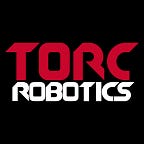Poised for the leap to driverless cars
10 years after the DARPA Urban Challenge kick-started self-driving tech
By Michael Fleming, CEO and co-founder, Torc Robotics
Ten years ago today, Torc Robotics and our Virginia Tech partners were handed a USB stick, starting the clock for our self-driving vehicle Odin in the 2007 DARPA Urban Challenge. We loaded the embedded route onto our vehicle, and nervously watched Odin drive itself out of sight. A teammate made the comment, “this is what it must feel like to raise a child and send them off to college having no idea what they were up to.”
Four hours and 36 minutes later, Odin autonomously crossed the finish line, placing third in what would later be called “the Continental Congress of the autonomous vehicle age.” Other vehicles were less fortunate; one ran into a building and two others collided. Those who competed didn’t realize it at the time, but we had just pioneered much of the terminology, architectures, and technical approaches that are commonly used in today’s self-driving technology.
Fast forward 10 years and the self-driving car industry is all abuzz. Automotive, software, and robotics companies — including Torc — are testing self-driving cars on public roads. Politicians at the state and national levels are debating policies to support development while balancing public safety. Industry experts are making predictions for when driverless cars will become commercially available.
Amidst all the noise and confusion, people often forget that self-driving vehicles have already been fully integrated into other markets. The defense industry has been using autonomous military vehicles to create safe standoff distances and reduce IED injuries and fatalities since conflicts worsened in the Middle East. Construction and mining firms have been using semi-autonomous haul trucks to remove workers from unsafe conditions and improve operations since 2008.
In each of these safety-critical situations, autonomous technologies successfully removed human drivers from behind the wheel — a challenge the auto industry must also face to unlock the transportation revolution. As we consider ways to do this, perhaps we should look to the time-proven process of build-test-learn.
When Torc first commercialized our autonomous technology in mining and military applications following the DARPA Urban Challenge, we started by assigning a remote safety driver with a joystick to each vehicle. We tested, made changes, and tested again. As our technology continued to improve, we went from one safety driver per vehicle to one driver per two vehicles, then five vehicles, then 10, increasing until we were satisfied — similar to an air traffic control system.
In both industries, our autonomous system had to navigate difficult conditions, without the advantages of road markings, signals and other safety systems. Each new, real-world scenario generated data and corner case examples for continuously refining our system. The more miles we logged, the more our system improved, and today marks 10 years in the making.
As each auto manufacturer rolls out their tech, there are many more lessons to be learned. Hardware systems will have to work with software systems, and software systems will have to account for new data. Torc, for example, has made 162,916 improvements to our software over the last decade. We’ve tried many different approaches and have had to understand many different trade-offs along the way.
Some think driverless cars will require a leap of faith. As an engineer, I believe they require planned, proven engineering. They might look and feel like magic, but under the hood it’s a safe and incremental process.
